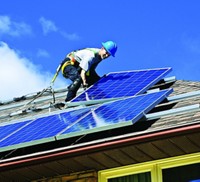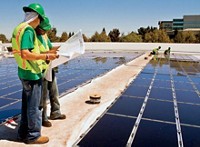Advertisement
Grab your lab coat. Let's get started
Welcome!
Welcome!
Create an account below to get 6 C&EN articles per month, receive newsletters and more - all free.
It seems this is your first time logging in online. Please enter the following information to continue.
As an ACS member you automatically get access to this site. All we need is few more details to create your reading experience.
Not you? Sign in with a different account.
Not you? Sign in with a different account.
ERROR 1
ERROR 1
ERROR 2
ERROR 2
ERROR 2
ERROR 2
ERROR 2
Password and Confirm password must match.
If you have an ACS member number, please enter it here so we can link this account to your membership. (optional)
ERROR 2
ACS values your privacy. By submitting your information, you are gaining access to C&EN and subscribing to our weekly newsletter. We use the information you provide to make your reading experience better, and we will never sell your data to third party members.
Business
Dow Sees The Light
With a little government help, the firm hopes to bolster solar power use in homes and businesses
by Marc S. Reisch
July 30, 2007
| A version of this story appeared in
Volume 85, Issue 31

IN MARCH, the Department of Energy selected 13 industry-led teams to receive government grants from a pool of $168 million made available to develop low-cost solar energy for homes and businesses. Surprisingly, one of the teams was led by Dow Chemical.
Not surprising was the government's choice of well-known energy industry stalwarts to receive funds from the Solar America Initiative, a component of the Advanced Energy Initiative that President George W. Bush announced in his 2006 State of the Union address. Recipients include General Electric and BP, as well as solar energy specialists such as United Solar Ovonic and Konarka.
Dow is best known in home and building construction as a supplier of adhesives, insulating foam, and house wrap. Expertise in solar energy is more the province of Dow Corning, an independent joint venture between Dow and glassmaker Corning that supplies the silicon wafers used to make solar cells.
But with a little government help, Dow figures it can bring a different kind of expertise to the fabrication of solar roofing systems for homes and offices. "Our goal is to integrate new materials into the construction industry," says Kousay Said, managing director of Dow Solar Solutions.
During the next three years, Dow and its fellow consortium members expect to spend $20 million, $9.4 million of which will be footed by the government. Dow plans to bring its experience in encapsulants, adhesives, and high-volume thin-film production methods to the consortium. Other members include solar cell maker Miasolé, solar electric inverter maker Fronius, technology and materials selection consultants IBIS Associates, and the University of Delaware's Institute of Energy Conversion.
To make sure the new solar systems are easy to install, construction firms Pulte, Lennar, and Prost Builders will take part in the development effort. The utility Southern California Edison will also play a role to ensure the systems integrate with the electricity grid.
Other governments around the world are hoping to promote the installation of solar cells into new and existing buildings. In June, for instance, Germany's Federal Ministry of Education & Research pledged more than $80 million to a group of companies to develop flexible, cost-effective organic photovoltaics for roofs, windows, and facades. The group's members, including BASF, Germany's Merck, and electronics specialist Bosch, plan to contribute more than $400 million of their own money to the effort.
The aim of the Dow-led consortium is similar to that of its German counterpart: to develop low-cost home and office roofing systems to supply a building's energy needs. As it accomplishes that objective, "nothing says we can't integrate these systems into building siding, railings, or awnings," Said points out. The systems will also reduce dependence on imported energy resources and cut emissions of greenhouse gases, he says.
Today, most silicon solar cells sit within heavy roof-mounted glass panels. But what if the silicon could be laminated between plastic layers and integrated into a roofing shingle? That is precisely what Dow and its partners are planning now, says Simon Yeung, Dow's R&D director for photovoltaics. Not only could this technique result in reduced fabrication costs, it could also mean lower installation costs because the roofing and the solar collectors could be installed at the same time, he points out.
Yeung notes that the average cost of electricity purchased from a utility is about 11 cents per kWh. At present, solar energy costs two to three times more. As part of the Solar America Initiative, Dow and its partners hope to bring that cost down below 10 cents per kWh by 2015.
Jim Petersen, director of R&D for home builder Pulte, says installation costs run between $15,000 and $60,000, depending on the size of a home, its energy requirements, and its location. "We want something that costs less, is easier to install, and is easier for the homeowner to maintain," he says.
THE DEVELOPMENT of an integrated solar roof would be a step in the right direction, Petersen says. The time to achieve payback on the cost of installing a stand-alone solar system today is fairly long, he points out. "Everyone likes the idea of solar power, but it is not as financially practical as everyone would like it to be," he says.
Though home and office builders are part of the Dow consortium, the first customer for products the partners develop is likely to be Dow itself, Said says. The firm intends to install the integrated roofing systems on company-owned facilities.
Dow has constructed a test facility at its Midland, Mich., headquarters to evaluate solar technologies under real-world conditions. The systems will be tied into the electric grid so they can draw on the grid when the panels and battery backup can't provide enough power.
Dow's Said expects to meet resistance when introducing solar systems into the construction trades, a business that is not often quick to embrace new technology. But as builders realize the value of integrated solar building products, consumers will benefit from low-cost, renewable, locally produced energy, he says.





Join the conversation
Contact the reporter
Submit a Letter to the Editor for publication
Engage with us on Twitter